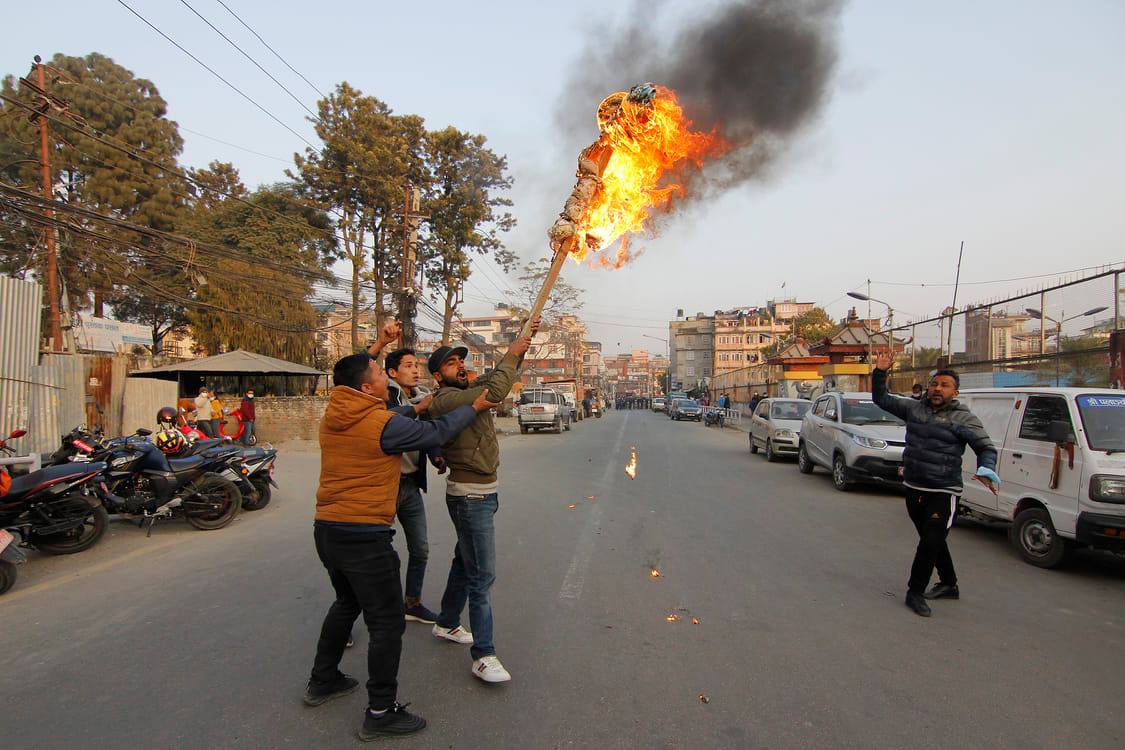Instability to cost Nepal dear in 2021

After a year of stagnation due to the Covid-19 crisis, Nepal’s economy has just started getting back on track. But political uncertainty once more threatens to derail it.
Just as Nepal Rastra Bank put out an optimistic economic report last week, Nepal plunged once more into instability as the ruling Nepal Communist Party (NCP) headed for a split after Prime Minister Oli’s dissolution of the Lower House on 20 December.
All macro-economic indicators were looking up: foreign exchange reserves and balance of payment situations have improved, the trade deficit has narrowed, remittances from Nepali workers overseas is robust, bank lending rates are going down, and as economic activity picks up even tax revenue is looking satisfactory.
Imports of industrial raw materials have hit Rs38 billion in November, which is only slightly lower than last year, and capital investment is back to pre-Covid levels indicating that the wheels of the economy are starting to turn again.
All these are indications that despite Covid-19, Nepal’s economy has not been hit too badly — at least at the macro level. However, the dissolution of the Lower Home last week, daily protest rallies on the streets, and moves to split the NCP do not bode well for the economy. Snap elections in April-May next year will be expensive, and will eat a big hole in the budget.

Three private sector organisations have expressed deep concern about the country being pushed towards uncertainty. They said continuity in economic policy and investment are only possible when politics is stable.
“There is a real need now to accelerate infrastructure development, create jobs and spur economic growth, but because the NCP government’s focus is elsewhere, we are wasting the opportunity,” says economist Biswo Poudel.
Nepal’s foreign exchange reserves have hit $12.65 billion, the highest ever, and enough to pay for a record 14 months of imports. Most developing countries have foreign exchange reserves only for 4-5 months of imports. Just in the past five months, the treasury added another $1 billion in reserves.
While remittances have defied expectations by not decreasing drastically, Nepal’s imports also fell because of the lockdown. Petroleum imports came down in the first half of 2020, and because there were no tourists, the import of luxury items also fell.
Experts say that the foreign exchange reserves should be put to good use to import industrial machinery and capital investment to boost manufacturing and infrastructure, which in turn will generate employment and create lasting downstream benefits for the economy.
Says Poudel: “We are not putting this huge foreign exchange reserve to productive use. It is being wasted.”

Nepal’s current account position is also finally looking healthy after four years of recurring deficits. This year, the current account savings were at Rs20.46 billion, indicating that the deficit fell sharply this year because of the drop in imports. Similarly, the balance of payments is also looking better than previous years because imports fell by 10.6% in August-November, and exports rose by 10.8%.
The average bank lending rate has fallen to 9.5% this year compared to last year’s 12%, and this could encourage investors. Says economist Keshav Acharya: “This is the perfect opportunity for those interested in starting quality medical care, better schools, and financing infrastructure and manufacturing.”
In fact, there is no lack of money in Nepal, what the country lacks is the capacity to spend. The government wastes billions every year on infrastructure projects that never get built. Even in the first five months of this fiscal year, only Rs35.1 billion has been spent, which is 10% of the development budget.
Economist Poudel says the government has enough resources to accelerate the construction of 500km of fast-track highways. “You need the political will to go ahead with it, and the slow pace of work on infrastructure is proof that such political will is absent,” he adds.
Indeed, there are several hydropower projects with 700MW capacity under construction, but no one seems to be in a hurry to complete them because of delays in putting up transmission lines. Similarly, the Kathmandu-Tarai expressway, Melamchi Water Supply Project, Tama Kosi Hydropower project, Sikta Irrigation and the Mid-Mountain Highway are all languishing.
Prolonged political uncertainty will delay these projects further, and remove the benefits that Nepal can accrue from its healthy macro-economic position.




